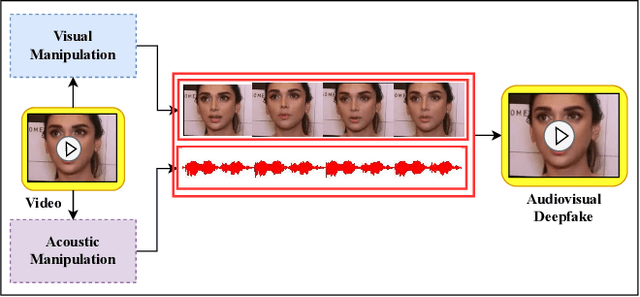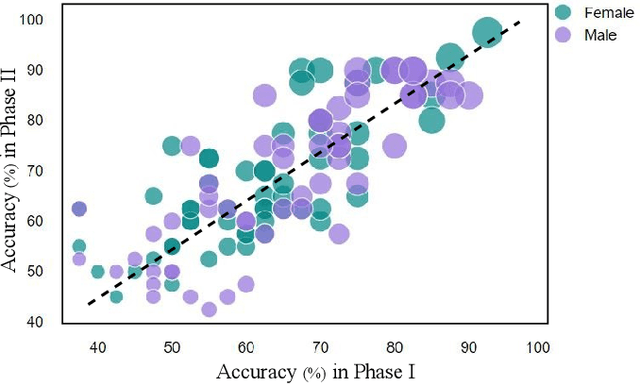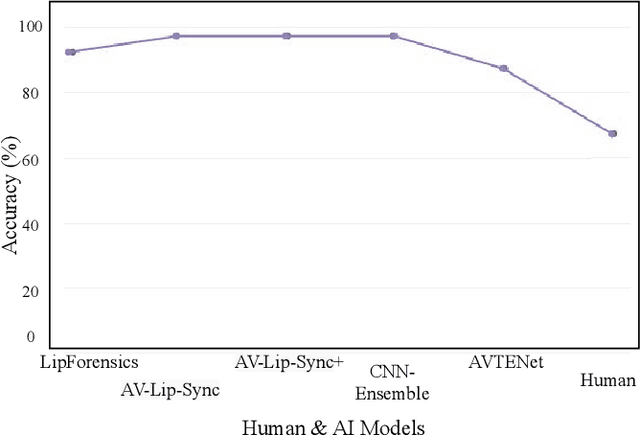Unmasking Illusions: Understanding Human Perception of Audiovisual Deepfakes
Paper and Code
May 07, 2024



The emergence of contemporary deepfakes has attracted significant attention in machine learning research, as artificial intelligence (AI) generated synthetic media increases the incidence of misinterpretation and is difficult to distinguish from genuine content. Currently, machine learning techniques have been extensively studied for automatically detecting deepfakes. However, human perception has been less explored. Malicious deepfakes could ultimately cause public and social problems. Can we humans correctly perceive the authenticity of the content of the videos we watch? The answer is obviously uncertain; therefore, this paper aims to evaluate the human ability to discern deepfake videos through a subjective study. We present our findings by comparing human observers to five state-ofthe-art audiovisual deepfake detection models. To this end, we used gamification concepts to provide 110 participants (55 native English speakers and 55 non-native English speakers) with a webbased platform where they could access a series of 40 videos (20 real and 20 fake) to determine their authenticity. Each participant performed the experiment twice with the same 40 videos in different random orders. The videos are manually selected from the FakeAVCeleb dataset. We found that all AI models performed better than humans when evaluated on the same 40 videos. The study also reveals that while deception is not impossible, humans tend to overestimate their detection capabilities. Our experimental results may help benchmark human versus machine performance, advance forensics analysis, and enable adaptive countermeasures.
 Add to Chrome
Add to Chrome Add to Firefox
Add to Firefox Add to Edge
Add to Edge